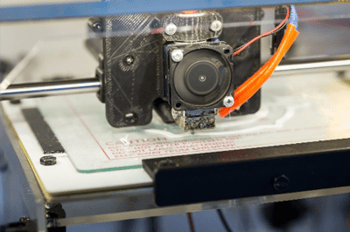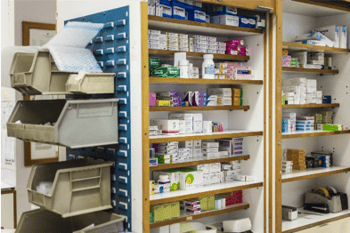6 Risk Factors Impacting Your Medical Device Labeling
Labeling is an important part of FDA’s quality system regulation for medical devices. So important, in fact, that labeling regulations are captured in several distinct parts of 21 CFR Subchapter H – Medical Devices. These sections cover how devices are tracked, the unique device identifiers (UDIs) and universal product codes (UPCs) necessary for that tracking, and specific labeling requirements.
All of this regulation isn’t surprising; labeling presents many opportunities for users and patients to be exposed to hazards, hazardous situations, and harms. It can also be used to mitigate risks with warnings and contraindications. Controlling this aspect of medical device development is crucial, but finding where risks reside can sometimes be elusive. While there are numerous labeling risks, there are six factors that your medical device organization should be evaluating in early stages.
 1. Printing supplies & equipment
1. Printing supplies & equipment
The supplies and equipment your organization uses to generate and print labels for your devices need to be controlled for risk. For example, mechanical or material breakdowns can cause misprints. Likewise, computer software used to generate and manage labels could experience errors, either from within the software itself or as a result of human factors.
2. Labeling materials
Beyond printing equipment and supplies, materials that actually comprise a label can be a source of risk for users and patients. Certain materials may have sterility concerns, or can result in allergic reactions that can impact patient health. Likewise, what is used to affix the label to your device can compromise its overall integrity; in the event a label peels or falls off, critical information users need to handle, use, and store the device is no longer available.
 3. Inspection procedures
3. Inspection procedures
FDA lays out very clear requirements for labeling inspections in 21 CFR 820.120 to ensure accuracy. They expect all of the following to be properly examined prior to approval from inspection personnel:
- UDI/UPC
- Expiration date
- Control number
- Instructions for storage, handling, and processing
If any of this information is incorrect, it can put patients and users at undue risk—whether from using an expired device, incorrect handling due to faulty instructions, or otherwise.
4. Language/grammar
Language and grammar might not seem like risk factors, but they’re the most important factors in labeling. Grammatical issues and mistakes can confuse users and patients, potentially resulting in exposure to hazardous situations. When more technical jargon is used, persons not well versed in that terminology struggle to interpret the meaning of the language. And then there’s the issue of international distribution; mistranslated instructions and other information on the label can very easily result in use error.
5. Storage conditions
 A multitude of storage factors can impact label integrity. For example, conditions of the physical environment—temperature, moisture, etc.—could cause label deterioration. These can be controlled through choosing more durable labeling materials, ensuring storage facilities follow controlled company procedures, and so on. Possible human factors, such as facility personnel confusing product packaging, could impact patient safety down the line and also need to be controlled.
A multitude of storage factors can impact label integrity. For example, conditions of the physical environment—temperature, moisture, etc.—could cause label deterioration. These can be controlled through choosing more durable labeling materials, ensuring storage facilities follow controlled company procedures, and so on. Possible human factors, such as facility personnel confusing product packaging, could impact patient safety down the line and also need to be controlled.
6. Human factors
From first generating label information to following written instructions for use, all of these human-device exchanges have some level of inherent risk. While it’s not possible to predict all the ways in which persons interact with your product and its labeling, thoroughly attempting to scope out and prioritize anticipated use scenarios can help you come up with more comprehensive risk controls.
A number of risk factors present themselves in device labeling, some more apparent than others. Controlling them requires robust risk management and design controls activities. Evaluating them now can save your team valuable time and resources in later-stage development.
About Cognition Corporation
At Cognition, our goal is to provide medical device and pharmaceutical companies with collaborative solutions to the compliance problems they face every day, allowing the customer to focus on their products rather than the system used to create them. We know we are successful when our customers have seamlessly integrated a quality system, making day-to-day compliance effortless and freeing up resources to focus on product safety and efficacy.




